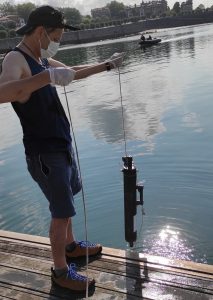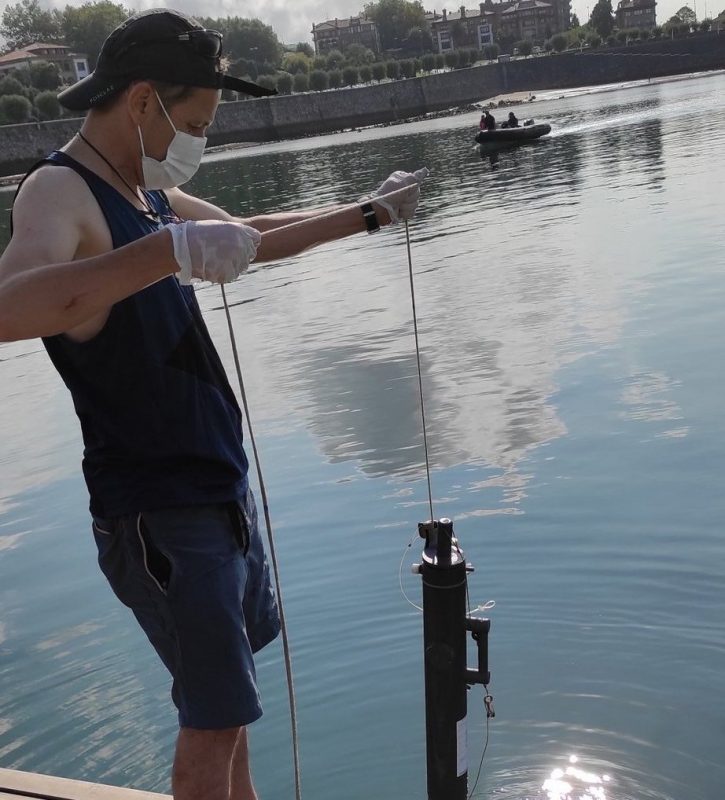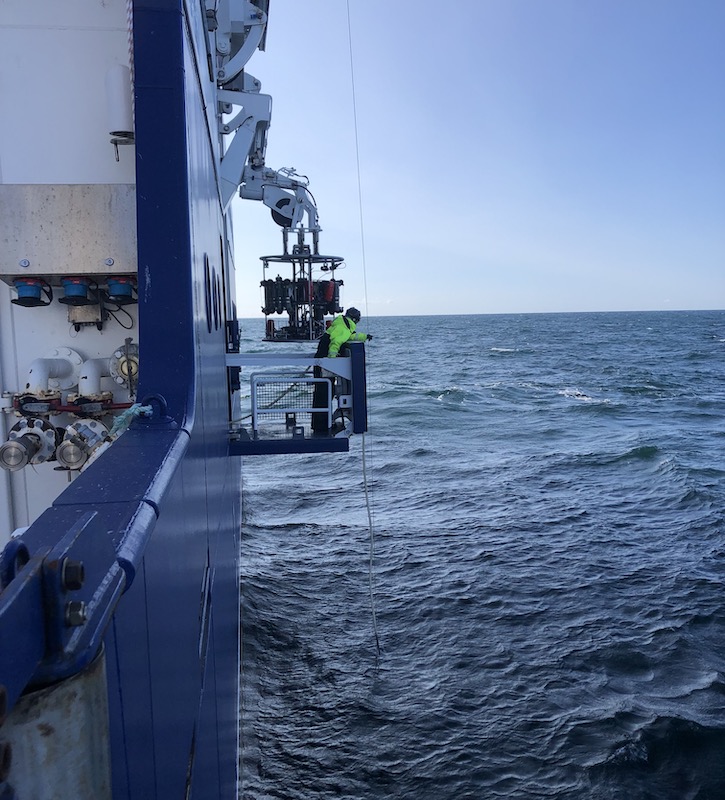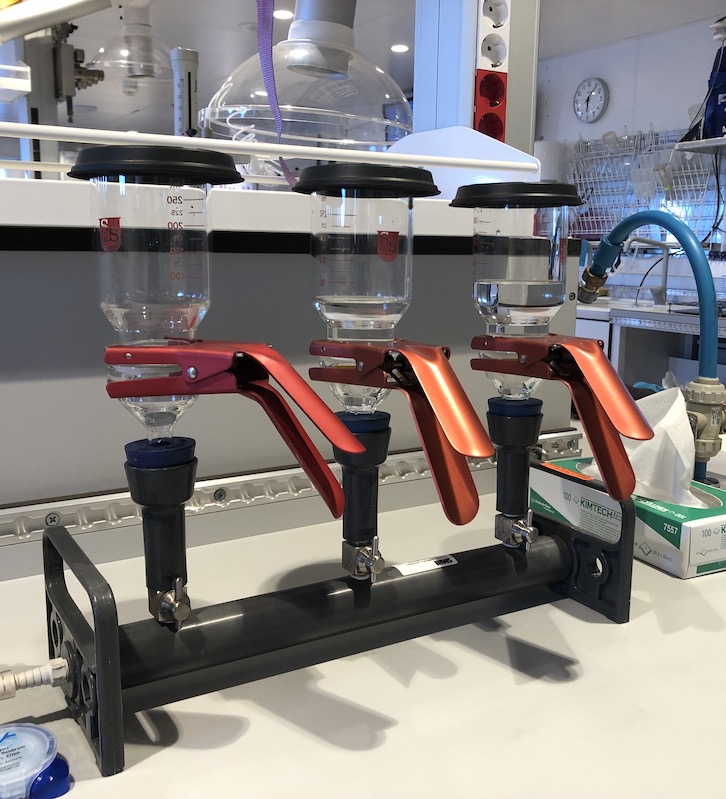
Taking Samples. Photo Credit: Getxo marina Ibon, PIE UPVEHU
The EuroGOOS Biological Observations Working Group (BIOWG) works to better integrate biological observation into the EuroGOOS framework. They will contribute to the EuroGOOS 2030 strategy and aims to achieve a cultural change in biological observation from individual efforts into an integrated, and coordinated European effort with global impact to further our understanding of life in the ocean and how it interacts with and influences the environment.
Key Objectives
This working group will focus on developing rigorous and operationally focused standard specifications and operating procedures for the generation of quantitative and qualitative biological data products, so that it may be integrated into current ocean observation programmes and modelling efforts. Its objectives are:
- Agree on an initial set of SOPs (Standard Operating Procedure) and data standards for the observation of life via eDNA and multi-omics protocols.
- The standardisation and SOPs for Imaging and evaluating how these data may contribute the most effectively to EOVs (Essential Ocean Variable) and EBVs (Essential Biodiversity Variables).
- Formulate and implement recommendations for new sensors and autonomous platform development and integration with existing approaches.
- Continuously liaise with the Biological and Ecosystems EOV Panel (GOOS) and the EBV development groups (GEO BON) and seek the endorsement of SOPs by targeting these EVs.
- Frugal science approaches will be promoted as long-term funding for observation, which is very difficult to obtain, and thus a reduced cost would significantly improve our ability to maintain long-term, well-replicated observatories.
- Develop structured obsolescence and on-boarding process for all technologies, methods, and operational models.
List of Members
Co-chairs
- Vera Fonseca, Centre for Environment, Fisheries and Aquaculture Science (Cefas), United Kingdom
- Mauro Celussi, National Institute of Oceanography and Experimental Geophysics (OGS), Italy
Members
- Andreja Ramšak, National Institute of Biology (NIB), Slovenia
- Antonio Cascella, National Institute of Geophysics and Volcanology (INGV), Italy
- Bengt Karlson, Swedish Meteorological and Hydrological Institute (SMHI), Sweden
- Costas Frangoulis, Hellenic Centre for Marine Research (HCMR), Greece
- Daniele Iudicone, Anton Dohrn Zoological Station (SZN), Italy
- Francis O’Beirn, Marine Institute (MI), Ireland
- Hans H Jakobsen, Aarhus University (AU), Denmark
- Helena Hauss, Norwegian Research Centre (NORCE), Norway
- Isabella Buttino, Italian National Institute for Environmental Protection and Research (ISPRA), Italy
- Ioulia Santi, European Marine Biological Resource Centre (EMBRC), France
- Iveta Jurgensone, Latvian Institute of Aquatic Ecology (LHEI), Latvia
- Julia Uitz, French National Centre for Scientific Research (CNRS), France
- Jun She, Danish Meteorological Institute (DMI), Denmark
- Kaisa Kraft, Finnish Environment Institute (SYKE), Finland
- Klaas Deneudt, Flemish Marine Institute (FMI), Belgium
- Klas Ove Moeller, Helmholtz-Zentrum Hereon (Hereon), Germany
- Lionel Guidi, French National Centre for Scientific Research (CNRS), France
- Lucie Cocquempot, French Research Institute for Exploitation of the Sea (Ifremer), France
- Maite Louzao, Fundación AZTI, Spain
- Martin Edwards, Plymouth Marine Laboratory (PML), United Kingdom
- Mauro Celussi, National Institute of Oceanography and Experimental Geophysics (OGS), Italy
- Naiara Rodriguez-Ezpeleta, Fundación AZTI, Spain
- Nicolas Pade, European Marine Biological Research Centre (EMBRC), France
- Nina Dzhembekova, Institute of Oceanology (BAS), Bulgaria
- Pier Luigi Buttigieg, Helmholtz-Zentrum für Ozeanforschung Kiel (GEOMAR), Germany
- Rainer Kiko, Helmholtz Centre for Ocean Research (GEOMAR), Germany
- Silvana Neves, Oceanic Platform of the Canary Islands (PLOCAN), Spain
- Sirje Sildever, Tallinn University of Technology (TalTech), Estonia
- Susan Evans, National Oceanographic Centre (NOC), United Kingdom
- Veronique Creach, Centre for Environment, Fisheries and Aquaculture Science (Cefas), United Kingdom
- Wenche Eikrem, Norwegian Institute for Water Research (NIVA), Norway
EuroGOOS Facilitation:
- Deniz Karaca, Science Officer – Email
Terms of Reference
|
EuroGOOS BIOWG Terms of Reference |
330.88 KB |


















































